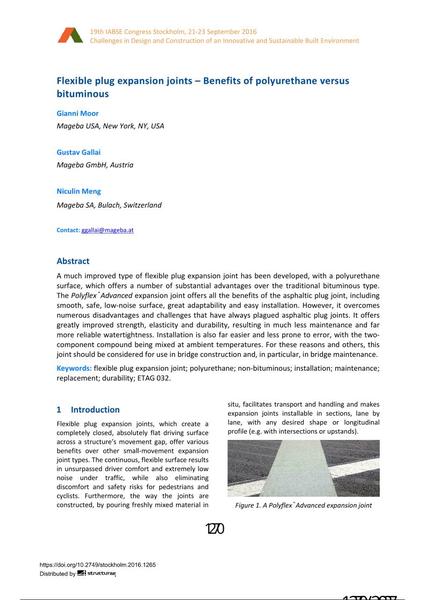Flexible plug expansion joints – Benefits of polyurethane versus bituminous

|
|
|||||||||||
Détails bibliographiques
| Auteur(s): |
Gianni Moor
(Mageba USA, New York, NY, USA)
Gustav Gallai (Mageba GmbH, Austria) Niculin Meng (Mageba SA, Bulach, Switzerland) |
||||
|---|---|---|---|---|---|
| Médium: | papier de conférence | ||||
| Langue(s): | anglais | ||||
| Conférence: | IABSE Congress: Challenges in Design and Construction of an Innovative and Sustainable Built Environment, Stockholm, Sweden, 21-23 September 2016 | ||||
| Publié dans: | IABSE Congress Stockholm, 2016 | ||||
|
|||||
| Page(s): | 1270-1279 | ||||
| Nombre total de pages (du PDF): | 10 | ||||
| Année: | 2016 | ||||
| DOI: | 10.2749/stockholm.2016.1265 | ||||
| Abstrait: |
A much improved type of flexible plug expansion joint has been developed, with a polyurethane surface, which offers a number of substantial advantages over the traditional bituminous type. ThePolyflex®Advancedexpansion joint offers all the benefits of the asphaltic plug joint, including smooth, safe, low-noise surface, great adaptability and easy installation. However, it overcomes numerous disadvantages and challenges that have always plagued asphaltic plug joints. It offers greatly improved strength, elasticity and durability, resulting in much less maintenance and far more reliable watertightness. Installation is also far easier and less prone to error, with the two- component compound being mixed at ambient temperatures. For these reasons and others, this joint should be considered for use in bridge construction and, in particular, in bridge maintenance. |
||||
